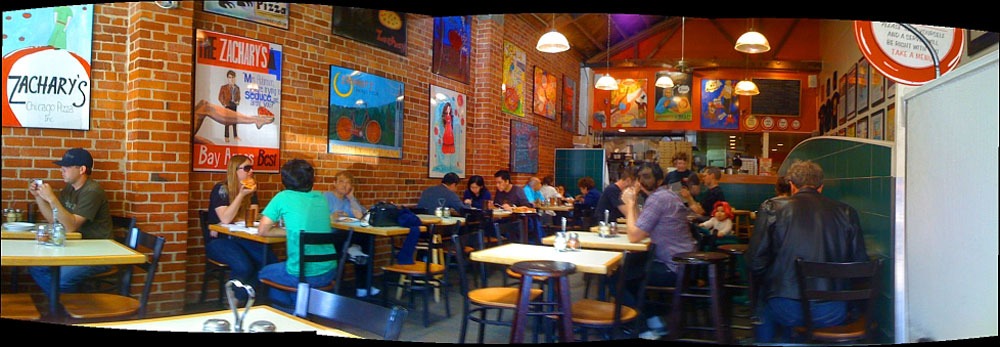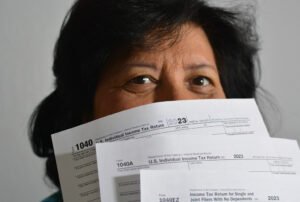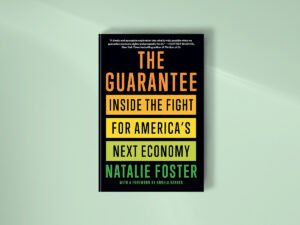
Employee ownership advocates maintain that if more citizens were owners of businesses, then wealth inequality, and perhaps income inequality, would decrease.
I believe it would, too. But I also say it depends.
The History of the ESOP
Taking note that the most common form of having employees be “owners” is the employee stock ownership plan, often referred to as an ESOP, a brief word on the history of this model of employee ownership is required.
In the last half of the 19th century, the US economy morphed from an agricultural base to one dominated by industry. There was no Social Security and no private sector retirement savings plans. A few corporate leaders of multistate businesses, most prominently Mr. William Procter and Mr. James Gamble, decided their companies should set aside stock to distribute to retired employees when they could no longer work.
When Congress drafted the Internal Revenue Code in 1921, Congress sanctioned setting aside company stock for employees by not taxing the value of the stock when set aside in a trust, which could be a profit-sharing or stock bonus plan.
In the early 1970s, Congress looked to redefine pension law. This was partly a response to evidence of corrupt use of funds that had been set aside for employees to have retirement security, coupled with the bankruptcy of the US car company Studebaker, which had funded its employee retirement plan solely with Studebaker stock. In doing so, the House Labor Committee included a provision that no such plan could have more than 10 percent of its assets in company stock.
Not surprisingly, when corporations were faced with the threat that a practice that many of them had engaged in for decades was to be outlawed, they led a successful advocacy campaign to have the House Tax Committee adopt a compromise. Businesses conceded that a retirement savings plan that promised a level of retirement benefits for retirees could not have the trust funded with more than 10 percent company stock. This is when the term defined benefit plan was established in federal law.
Back in the 1970s, nearly all pensions were structured as defined benefit plans. Under such plans, vested employees would receive a guaranteed annuity on retirement for the rest of their lives, with the amount set at some percentage of their pre-retirement salary level. But if a specific benefit level was not promised, then, businesses argued, it was okay if that pension invested more heavily in company assets. Such pensions are known as “defined contribution” plans. These, too, date back to the 19th century and were included in the first Internal Revenue Code of 1921.
The reform bill, enacted by Congress in 1974, ultimately carried the title of ERISA: the Employee Retirement Income Security Act. ERISA governs both tax-qualified defined compensation plans and defined benefit plans. For a variety of reasons, ever since ERISA passed, far fewer US corporations sponsor defined benefit plans in favor of defined contribution plans, the most common of which is the 401k.
Anyhow, for employee-ownership advocates, getting Congress on board to permit company stock contributions at any level was important, but insufficient to enable the expansion of ESOPs. In fact, another provision threatened to eliminate the small number of ESOPs, then known as Kelso-plan companies, that did exist. Back in 1974, fewer than 250,000 workers had ownership stakes in Kelso-plan companies. And getting that far required workers to buy company stock using “borrowed” money, a practice that ERISA would largely forbid.
Quick digression:
Dr. Louis O. Kelso of San Francisco, who lived as a young man through the Depression of the 1930s, developed an analysis that said capitalistic economies could not survive if Karl Marx’s belief that a capitalist economy resulted in the rich getting richer and the poor poorer was true. Kelso also predicted automation would lower the number of jobs paying a decent wage, and fewer and fewer employees would have sustainable work. (In the 21st century, can we mention how artificially intelligent systems can replace workers?)
With some very insightful books, The Capitalist Manifesto and Two-Factors Theory: The Economics of Reality, Kelso put forward the view that making employees owners—or better yet, capitalists—was the most equitable way to avoid this. He rejected communism in no uncertain terms because he saw state ownership and control as ineffective; it relegated the poor to being poor, and more disturbing, would kill all civil liberties, as the state in total control could not tolerate individual freedom and creativity.
Kelso developed a method whereby average-pay employees became owners in the companies where they worked. The process: the stock to be placed in a defined contribution plan would be purchased from current company owners with borrowed money, as the employees themselves could not afford to finance such a transaction out of pocket.
Sign up for our free newsletters
Subscribe to NPQ's newsletters to have our top stories delivered directly to your inbox.
By signing up, you agree to our privacy policy and terms of use, and to receive messages from NPQ and our partners.
Back to Congress and ERISA. The draft that went to the ad hoc House-Senate conference committee to reconcile the differences between the two bodies of Congress did not sanction the use of borrowed money to buy stock to benefit the employees. Fortunately for employee-ownership supporters, Kelso and a few of his colleagues had in the early 1970s persuaded Senator Russell Long, the powerful chair of the Senate Finance Committee, that his dream of more wealth for more people, as advocated during the Depression by his father, senator and governor of Louisiana Huey P. Long, could become reality if there were more owners in Kelso-plan companies.
Just before the joint Senate-House conference committee finished drafting the final ERISA law, Kelso realized that his plan was for all practical purposes slated for elimination. He and a few colleagues flew to Washington, saw their friend Senator Long, who headed the conference committee drafting the final ERISA bill, and told him that the bills from the House and Senate if adopted, would, in essence, make Kelso-plan companies very rare by making borrowing to finance one a “prohibited transaction.” Upon direction from Senator Long, staff drafting the final new ERISA law added an exception to the prohibited transaction rule for Kelso plans, which were officially referred as an “employee stock ownership plans,” or ESOPs.
Thus, retirement savings law since 1975 sanctions using borrowed money to purchase stock for ESOPs, which can have as assets any level of company stock for the employees’ benefit upon retirement, death, disability, or termination from employment if working, usually anywhere from one to five years, for the ESOP sponsor. (There are provisions requiring diversification of assets once an employee turns 55.)
The rest is history. While in 1974 there were fewer than 250,000 members of Kelso plans, today, 14.2 million Americans are ESOP plan participants. ESOPs have proven to be politically popular. Since 1975, even with Senator Long retiring at the end of 1986, Congress has never enacted any negative law significantly discouraging creating employee ownership via an ESOP plan, and they have consistently approved special tax laws incentivizing the creation of ESOPs.
Now, as the second decade of the 21st century ends, the evidence is very strong that more and more current private company owners are cashing in their stock holdings by selling their stock to an ESOP. For example, on just one day, local newspapers from across the US had stories of seven local companies being sold to an ESOP to benefit employees. In the past two years, at least six new state programs to promote employee ownership have launched, in addition to the passage of the federal Main Street Employee Ownership Act last year. And the Democracy Collaborative, a nonprofit advocacy group, has launched a campaign that seeks to ensure that by 2050, 50 million in the US will be owners in the companies where they work.
Could economic democracy be close at hand?
Well, let’s not get ahead of ourselves. If 50 million employees became significant owners of stock where they work, that would be about 30 percent of today’s labor force, which presently totals 164 million, and, assuming the labor force grows, maybe 25 percent of the 2050 labor force. This sounds impressive, but, if you dig down, you’ll find while many employees have stock in the companies they work, both through ESOPs and other forms, it is often a tiny percentage of overall company stock.
Firms where employees have a meaningful ownership stake are far less common—being generous, maybe in the three-to-four-percent range. (To get details, go to the National Center for Employee Ownership website and click on “Data” on their home page.)
Many ESOP advocates, your author among them, like to say, “Oh, look at the data from DOL (US Department of Labor) officially required filings from companies with ESOPs, and add those estimated to work in other models of employee ownership, such as worker co-ops and broad-based stock option programs, and there are 15 to 17 million Americans who have significant ownership in the company where they work.”
But let us be candid about that 15 to 17 million number. Year after year in the 21st century, approximately 75 percent of that 15 to 17 million are employed in only one percent of the companies in the US—companies that are publicly traded. And most important, as a rule, these 12 million or so employees have ownership stakes in their employer of less than five percent of the company’s outstanding shares.
But there is a different kind of ESOP in which workers are meaningfully empowered. This is the kind of workplace environment made manifest by many companies that are not publicly traded and which typically have fewer than 500 employees. These companies, with a few exceptions, provide more sustainable jobs, are more productive and more profitable, and provide better retirement savings than companies that do not have a significant percentage of the companies’ stock owned by an ESOP or directly by employees.
While some publicly traded companies in the 21st century have management styles that are open and focus on employee engagement, the private, employee-owned companies that have the much praised and widely admired “ownership culture” employee ownership advocates love to tout, are, in fact, a much thinner slice of our economy. It is these companies, where employee ownership means a meaningful share of the company, where one finds the impressive findings regarding greater earnings, productivity, and so on. It is these firms that obtain the stellar results regarding employee wealth building and employee stability, as the Rutgers Institute for the Study of Employee Ownership and Profit Sharing and others have demonstrated.
In other words, even if the US were to have 50 million employee-owners by 2050, it matters how we define the term. If the only measure is the raw number of employees participating in a program in which employees own on average one-to-five-percent stakes in the companies where they work, then reaching 50 million by 2050 is very doable.
But to achieve a meaningful 50 million employees owning significant stakes in companies building wealth in our US economy, more is required. Broadly speaking, there are two pathways. One is to increase the number of employees with significant ownership in companies not publicly traded; the other is to have employees become more significant owners in the one percent of our nation’s companies that are publicly traded. Certainly, the best option is a combination of the two—that is, an economy with significant employee ownership both in companies that are not publicly traded and in publicly traded companies.
So, let us face the fact that just counting all who work in a company, private or public, that has a policy that enables employees to own stock in calculating that 50 million number may not get us to greater income and wealth equality. On the other hand, if 50 million employees can achieve significant ownership of the companies where they work, then our nation may indeed move toward an economy marked by far less wealth and income inequality than our nation suffers from today.
Note: Portions of this article draw on a blog post from September 2019 by Michael Keeling, “Fifty by Fifty Goal: 50 Million Employee Owners? Or 50 Million Empowered Employee Owners?”










